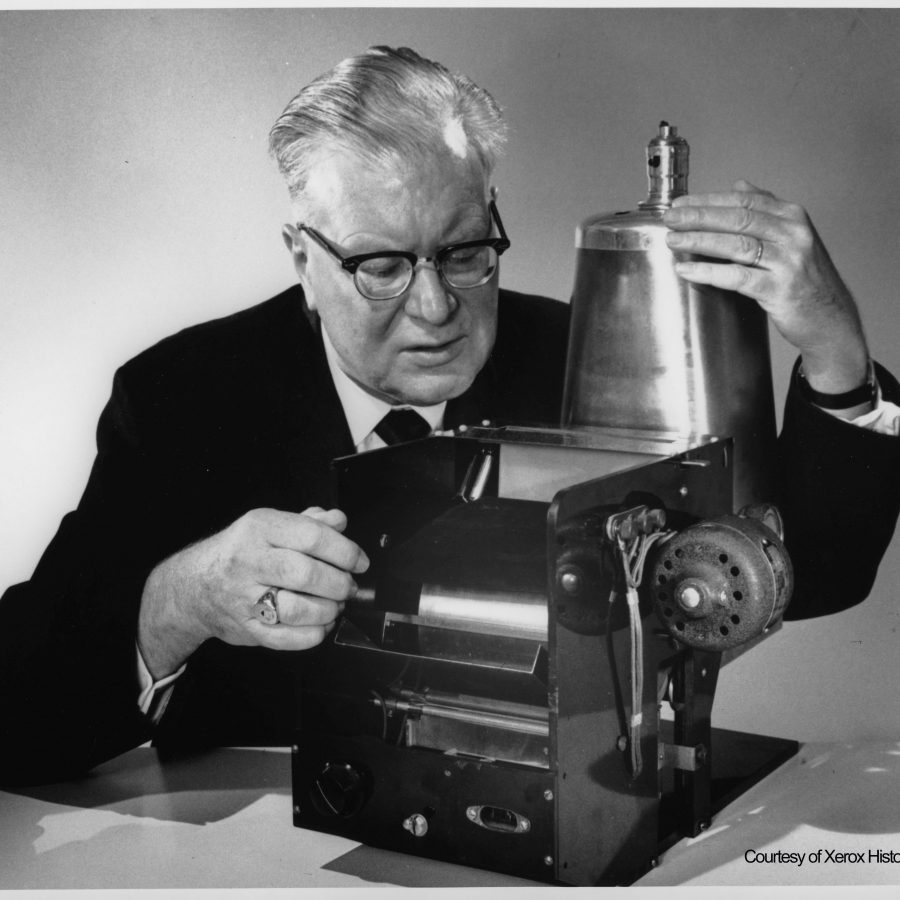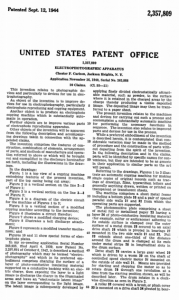Chester Carlson

The xerographic process, which was invented by Chester Floyd Carlson in 1938 and developed and commercialized by the Xerox Corporation, is widely used to produce high-quality text and graphic images on paper.
Carlson originally called the process electrophotography. It’s based on two natural phenomena: that materials of opposite electrical charges attract and that some materials become better conductors of electricity when exposed to light. Carlson invented a six-step process to transfer an image from one surface to another using these phenomena.
First, a photoconductive surface is given a positive electrical charge. The photoconductive surface is then exposed to the image of a document. Because the illuminated sections (the non-image areas) become more conductive, the charge dissipates in the exposed areas. Negatively charged powder spread over the surface adheres through electrostatic attraction to the positively charged image areas. A piece of paper is placed over the powder image and then given a positive charge. The negatively charged powder is attracted to the paper as it is separated from the photoconductor. Finally, heat fuses the powder image to the paper, producing a copy of the original image.

